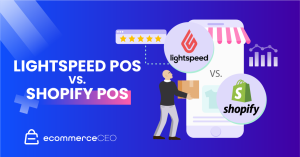When you first start your ecommerce business, your order volume is low enough to handle your own fulfillment, so a 3PL is likely the last thing on your mind. But as you grow, you may get so many orders that all your time is spent fulfilling customer orders. If you get overwhelmed with fulfillment, your day-to-day business operations may fall behind.
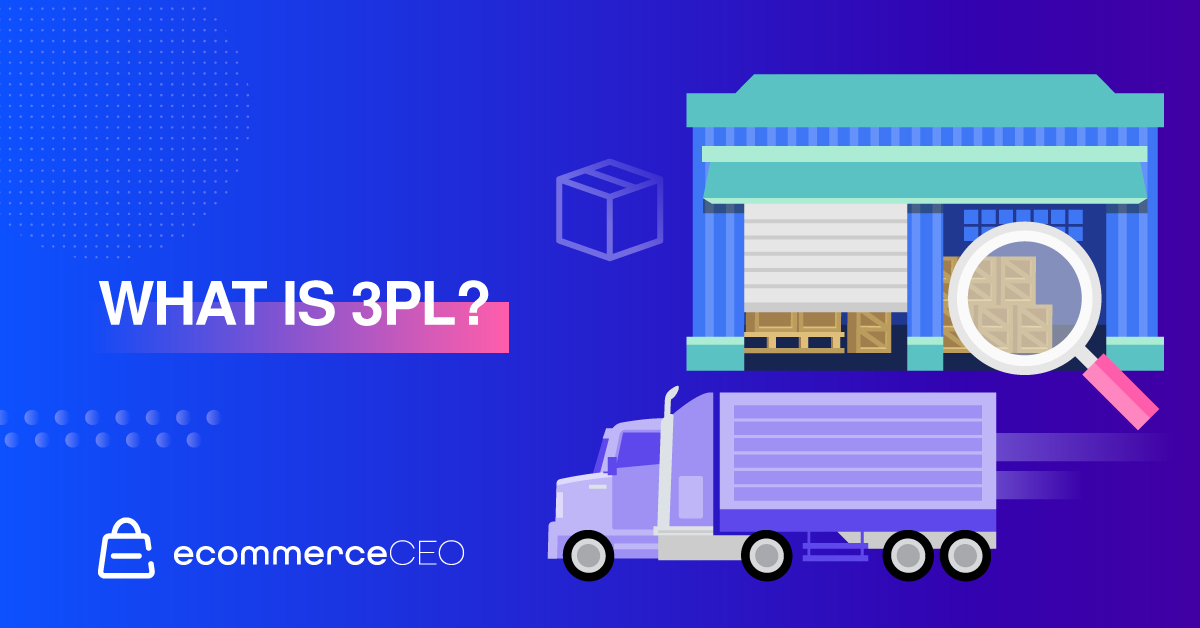
To keep things running smoothly, it’s ideal to pass off your order fulfillment to a third-party logistics (3PL) company. They’ll handle order fulfillment while you focus on the aspects of your business you know best.
What is a 3PL?
As the name implies, 3PL third party logistics providers are a third party that helps businesses handle shipping. The three parties involved are:
- The business
- The logistics provider
- The shipping carrier
3PLs handle logistics operations for your company, so you don’t have to. Many offer multiple services, which you can pick from to suit your business needs. As your company grows, you can add more support, such as inventory management, kitting, and assembly. (If you have a subscription box business, for instance, you’ll need a provider that offers kitting services.)
3PL Provider Types
There are four types of 3PL providers:
- Standard: Sufficient for most ecommerce businesses, these offer basic services like transportation and storage.
- Service Developer: Offers the same as standard, plus IT infrastructure and management – ideal for those who need more security and compliance management.
- Customer Adapter: Handles most of a client’s logistics management, including the entire shipping process, even handling rate maintenance and negotiation with carriers.
- Customer Developer: Completely takes over all logistics activities on behalf of the client’s business. This approach is expensive because the developer manages everything for the client.
How 3PL Works
You don’t need to be a 3PL fulfillment expert, but it helps to understand how it works as you compare your options for logistics services.
Receiving
Before they can ship orders for you, the 3PL must receive your inventory. “Receiving” is accepting your inventory into the warehouse and storing it until a customer places an order.
Every 3PL has its own storage capacity and process for how inventory is received and stored. When you choose the provider you’ll work with, make sure you understand their process.
ShipBob, for example, requires clients to fill out a Warehouse Receiving Order (WRO). This ensures they know exactly what products they’re receiving and how many units of each, to keep things organized.
Warehouse Storage
After receiving inventory, it moves to storage, which may or may not be distributed across multiple fulfillment centers to allow for faster shipping and delivery.
With ShipBob, each SKU will have dedicated storage location that may be on a pallet, on a shelf, or in a bin.
Since different companies will have its own storage capacity and warehouse space is not a one-size-fits-all industry, it’s crucial to work with a provider that has more than adequate storage space for your current inventory. As your business grows, in terms of product line and order volume, your 3PL must be able to keep up with you.
A 3PL is not on-demand warehousing. That’s just a company that matches your business with extra space in miscellaneous warehouses. On-demand warehousing companies don’t operate any logistics services.
Picking
After your customer hits “submit” on an order, the 3PL fulfillment process starts.
Some 3PL companies require you to manually upload orders into their system. This may mean using spreadsheets that include order details, customer details, and shipping details.
This approach will be easy when you don’t have a lot of orders. Ultimately, it is inefficient and full of error potential.
The ideal 3PL partner uses technology that integrates with your ecommerce platform or online marketplace. Order information is automatically sent as orders are placed. This streamlined approach makes it easier to automate shipping by tracking orders, shipments, and inventory stock levels in a centralized location.
Once your 3PL receives the order, it will be sent over to the warehouse picking team, where a picker receives the list of items, quantities, and storage locations. The picker will collect the ordered products from their locations, and then it moves to the next phase.
Packing
The packing materials used to pack and ship your orders will vary depending on your 3PL provider’s capabilities, the items being shipped, and your brand preferences.
Common standard packaging materials include:
- Plain, unbranded boxes
- Bubble mailers
- Poly bags
- Dunnage and paper-based dunnage (That’s just a shipping term for the things that come inside a package, like kraft and crinkle paper, bubble wrap, fillers, etc.)
- Packing tape
Depending on the third party logistics company you use, you may be charged for packing materials separately, while others include it as part of their fulfillment services.
Some 3PLs allow you to ship products to customers in your own branded packaging, from a company like Packlane. If having a branded unboxing experience is important to you, opt for a provider that allows for custom packaging and inserts.
Shipping
After the items are packed, it’s time to ship. Most companies will buy and print shipping labels for you. While some companies have preferred partners, others will compare shipping costs from multiple carriers to provide the best possible deal.
Carriers such as UPS, USPS, FedEx, and DHL pick up orders from warehouses to ship to the customer. The carrier and shipping speed will vary from one order to the next, based on the available shipping options, what the customer paid for, 3PL partnerships and policies, etc.
After the order ships, if you use a 3PL with integrated technology options, the tracking details will automatically be pushed back to your system and sent out to the customer.
Returns Processing
Some 3PL companies also offer returns processing, otherwise known as reverse logistics. If a customer returns an order (it’s the wrong product, doesn’t fit as expected, etc.) it goes back to your 3PL. Once received, the 3PL will process the return and either dispose of or restock the item according to your preferences and policies.
You’ll also have the option to have the 3PL provide return shipping labels on your behalf, which is convenient for you and your customers. You don’t have to handle returns in-house, and customers can easily track their return order status.
3PL vs. 4PL
In researching 3PLs, you may also find the term 4PL, or fourth party logistics. The difference here is that you add another party to the mix. It adds another degree of separation between you as the ecommerce merchant and the companies shipping your products.
If you contract with a fourth party logistics provider, the 4PL company arranges and. manages the 3PL services for you as their client. You may also hear this called “double brokering.”
Fourth party logistics typically provide end-to-end supply chain management for their clients, going beyond 3PL services to offer inventory procurement, manufacturing, etc.
Benefits of 3PL
No matter what your company sells and the exact services your 3PL offers, there are plenty of benefits to the partnership. Though 3PLs all variety in capability, all of them will help with inventory management, packing and shipping, which helps to increase productivity and maximize profitability.
Saves Your Business Time and Money
When you partner with a 3PL, you immediately reap cost savings since you don’t have to buy your own warehouse or rent warehouse space. The more your business grows, the more you’ll spend fulfilling orders yourself. You’ll pay not only for the storage space, but for the forklifts and other heavy equipment, labor, warehouse management software, labor costs, etc. Those costs add up quickly.
For many small businesses, it makes sense to save those costs and the time you’d spend filling orders yourself by outsourcing your fulfillment to a 3PL. You can focus the time you’d spend filling boxes, printing shipping labels, and scheduling pickups to more strategic initiatives, like new product lines and marketing campaigns.
Pass Shipping and Logistics to Experts
Being an expert in your industry doesn’t mean you have the time to become an expert in logistics, too. When you work with an experienced third-party logistics company, you’ll be able to use their experience and technical resources to keep all parts of your business running smoothly. You won’t have to take time away from other value-added activities to focus on order fulfillment.
Reach More Customers
Handling things on your own may limit your exposure to a single region. If you want to go nationwide or even international, partnering with a 3PL helps keep costs down.
Most 3PL companies have expanded networks with fulfillment centers throughout the country (and many across the globe as well), making it easier for you to get packages anywhere you need them to go, faster and more affordably.
3PL Costs
What you’ll pay for 3PL services depends on the company’s pricing model, as well as what your business needs. Some costs to keep in mind as you choose your 3PL provider include:
- Onboarding Costs: Costs associated with bringing your business into the warehouse and getting your technology up and running
- Inventory Receiving Costs: Costs associated with accepting and storing your inventory. Some companies charge per unit, while others may charge per pallet, per hour, or a flat rate.
- Inventory Storage Costs: Fees associated with inventory that sits in storage every month. These may be charged by per SKU, per unit, or fixed fees based on the warehouse space you take up.
- Pick and Pack Costs: Costs associated with picking and packing the orders; some companies include this in their costs. Some don’t charge at all for orders under a certain threshold. Others will charge a per-item fee based on order size.
- Packaging Costs: Some companies may charge for packaging materials like boxes and air fill as a separate line item.
- Kitting Costs: Kitting, sometimes also referred to as assembly, references any specific ways items are packed or arranged before they’re shipped to customers. Because the service is unique for each client, fees vary depending on the complexity of the packing. Fees are usually based on the number of items to be packed, and how many units need to be assembled.
- Shipping Costs: This is the amount the company charges to get the package from their fulfillment center to the customer’s door. These costs vary based on shipping zones, shipping speed, dimensional weight, carrier, etc.
Is a 3PL Right for You?
A 3PL could be the answer for your ecommerce business if:
- You ship 100+ orders a month
- Your garage or spare room is no longer enough to store your inventory
- You want to compete with companies that offer 2-day shipping so you can meet (and exceed) customer expectations.
Order Volume
There’s no magic order volume right for every business. For some, it may be more, but for others it may be less. The real deciding factor is an increase in order volume that you cannot keep up with. If you’re asking friends and family to help you, it’s time to outsource fulfillment to the experts.
Why? You’re spending time on low-value activities (picking, packing, shipping) when you could invest that time in value-added activities (onboarding new customers, marketing, etc.)
Inventory Storage Space
Whether it’s a garage, your dining room, or spare bedroom, if you’re finding that you no longer have the room to store all the inventory you need to pack and ship your orders, it’s time to reclaim the space and work with a 3PL.
Fast Shipping
Thanks to Amazon Prime and its 2-day shipping, that’s become the new standard for ecommerce. If you’re fulfilling orders yourself, that offering can really do a number on your profit margins. Leveraging a 3PL also means you’ll get their volume discounts, and be able to ship from multiple zones, which makes it easier to get products to everyone within two days, no matter where they are in the U.S.
Considerations When Choosing a 3PL Provider
At this point, you’re convinced you need to find a third-party logistics provider – but now, you don’t know how to choose the right one for your business needs.
Here are three critical areas to evaluate as you meet with potential providers.
Full Supply Chain Management
First, determine how they handle order fulfillment, then ask how they’re different from traditional providers. For long-term success and growth, you need a company that goes beyond the pick, pack, ship model. Instead of helping with a single isolated part of fulfillment, you need a 3PL that will coordinate everything across the entire supply chain.
Technology
Make sure you understand how their technology works. You don’t want to spend time exporting and uploading order spreadsheets because that’s inefficient order management. Find out if and how your prospective 3PL integrates with your online store. That’s important, of course, but you also need to know how the 3PL technology helps you leverage data.
If the 3PL isn’t equipped with the technology to automate order management, keep track of inventory management, etc., then you need to find a provider that is. Technology becomes more important as yu scale.
Fulfillment Center Locations
Find out how many fulfillment center locations the company operates, and where they are. With this information, you can determine what kind of shipping options you’ll be able to offer. The more fulfillment centers and the more spread out they are, the more area you’ll be able to cover. Hubs in major cities are always a good sign, since they make it easier to get goods where they need to go in a shorter time frame.
Best 3PL and Ecommerce Shipping Companies
Let’s look at some of the best 3PL options for ecommerce businesses.
ShipBob
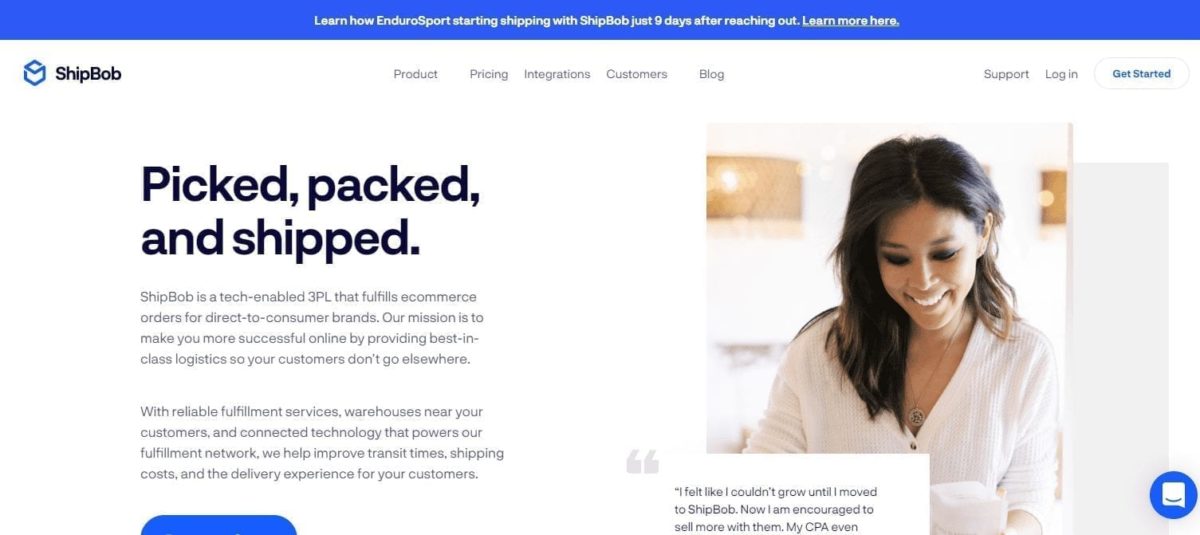
As one of the fastest growing and most robust fulfillment solutions, ShipBob is our number one recommendation for ecommerce fulfillment. With multiple warehouses across the United States, you can use ShipBob to offer 2-day shipping to customers to most, if not all, of your customers. The user interface is incredibly easy to use, so you don’t have to be a tech wizard to learn how to use it.
ShipBob offers competitive pricing for ecommerce businesses of all sizes. But, if your products require refrigeration, you’ll have to find another provider.
Red Stag
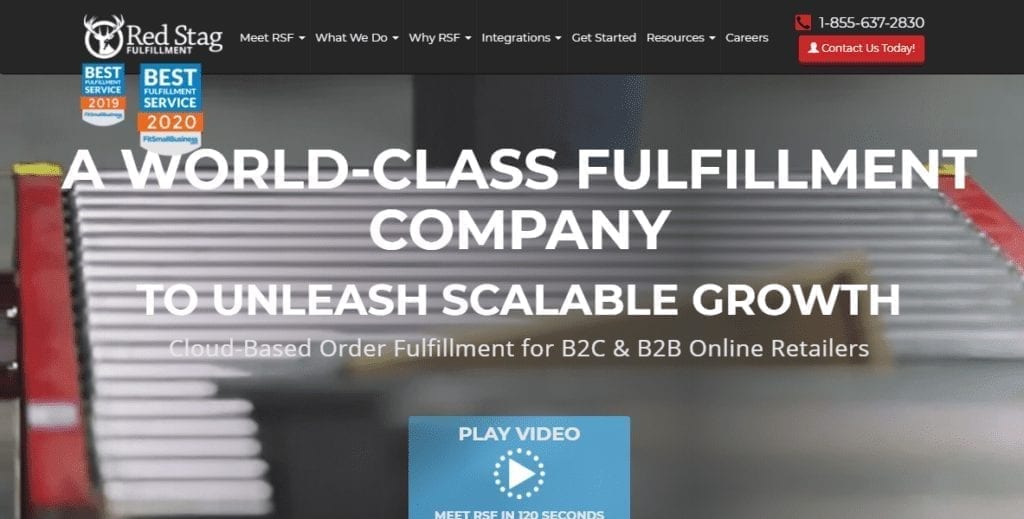
Red Stag Fulfillment is the best 3PL for online retailers who have a catalog full of large or heavy items. The company handles a wide variety of items and sizes, but specializes in large and heavy items.
Though it’s more expensive than other 3PL companies, there’s video monitoring, a network of fulfillment warehouses, and same-day shipping. You don’t get a dedicated account management or Walmart integration, however.
Rakuten Super Logistics
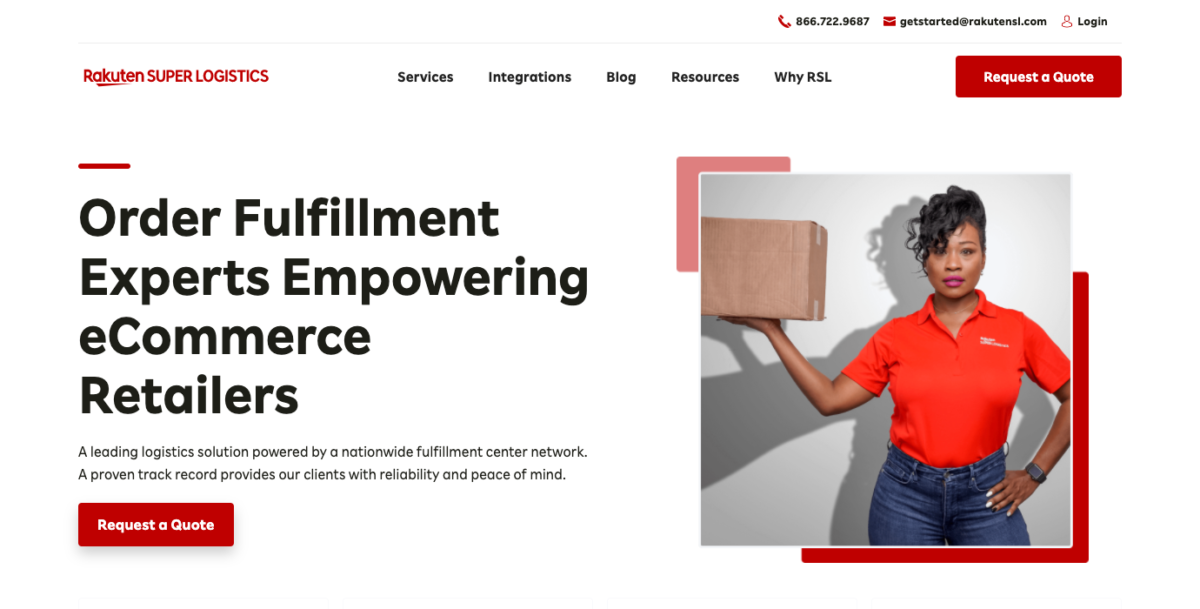
Rakuten Super Logistics is a good 3PL for enterprise level companies. In additional to packing and shipping services, they offer marketing services, too. They have a vast fulfillment network across the United States so that they can offer 1 to 2 day ground shipping for clients, so all your customers are happy.
Rakuten Super Logistics offers kitting services and subscription box services, too. There are, however, no global fulfillment centers, no custom packaging, and no DHL integration.
If you need services tailored to your business, Rakuten Super Logistics could be the right solution for your business.
Amazon FBA
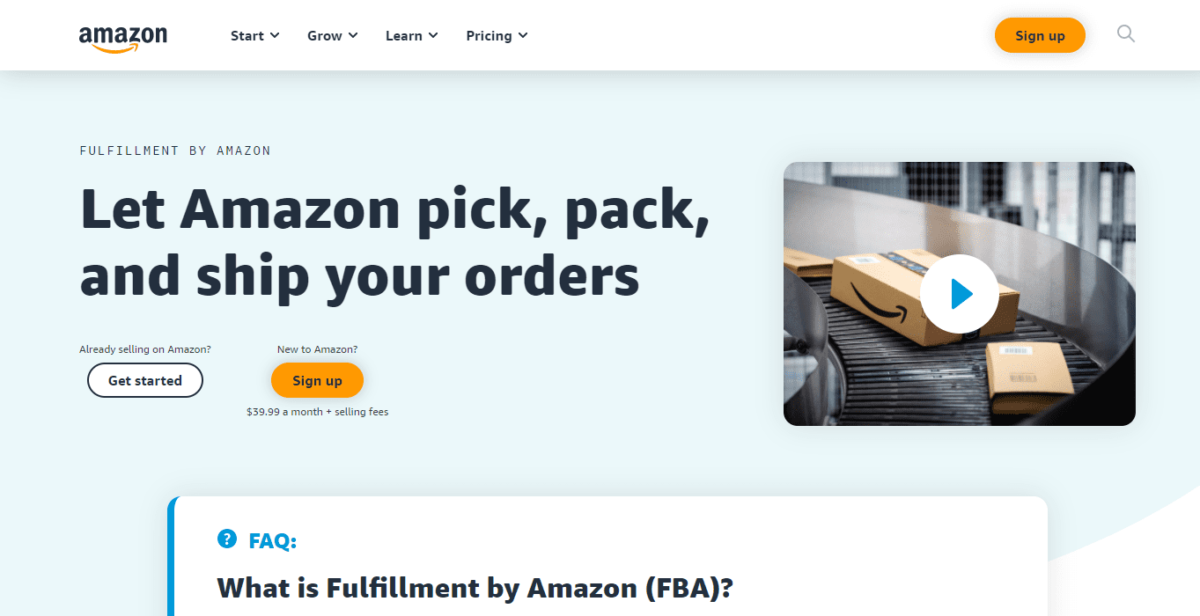
Amazon FBA, otherwise known as Fulfillment By Amazon, passes all your order fulfillment duties to the same team that handles Amazon’s orders.
Amazon FBA is a top choice for high-end volume and high-end inventory. If you want to provide Prime one-day and two-day shipping to your customers, then you can’t go wrong with Amazon.
That said, Amazon gets your customer data. And the inventory and other fees vary and seem to change constantly.
If you want an experienced team to handle everything, and don’t mind sharing your customer data with the largest e-retailer in the United States, then look into Amazon FBA.
Deliverr
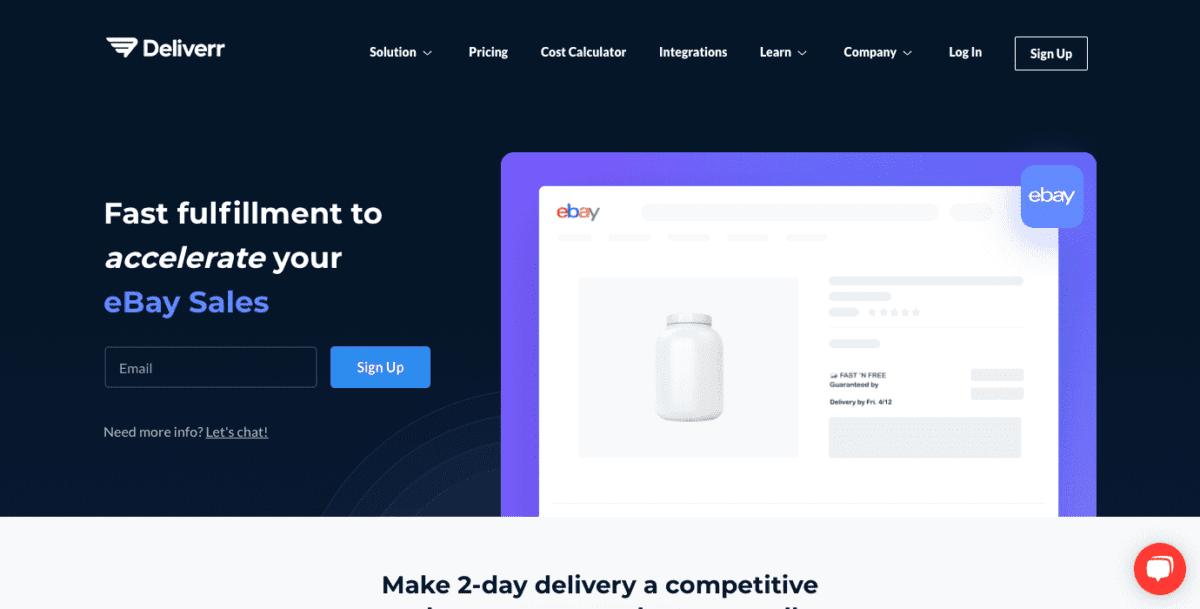
If you’re a U.S.-based business that doesn’t offer international shipping, then Deliverr could be the right option for you. The company is one of the newest in the market, having been founded in 2017. Deliverr’s built on offering 2-day shipping to your customers across all your sales channels.
Deliverr is completely transparent with pricing. You can enter a product’s details (and look it up on Amazon if it’s already there) and get the exact costs associated with shipping.
Deliverr integrates with most major online marketplaces and ecommerce platforms, including BigCommerce, Shopify, WooCommerce, Amazon, Walmart, and Wish.
If, however, you need kitting for your subscription box business, or want someone to handle returns processing, Deliverr isn’t for you.
3PL FAQs
Final Thoughts
In the ecommerce business, it’s crucial to get your customers’ orders correct and to their doorsteps as soon as possible. That can only be done if you have a quality fulfillment partner to support your company as it grows. Understanding what to look for as you choose a 3PL is key to making the right choice for your business.
If you’ve used any of these fulfillment services before, we’d love for you to share your thoughts so our other readers can learn from your experiences.


